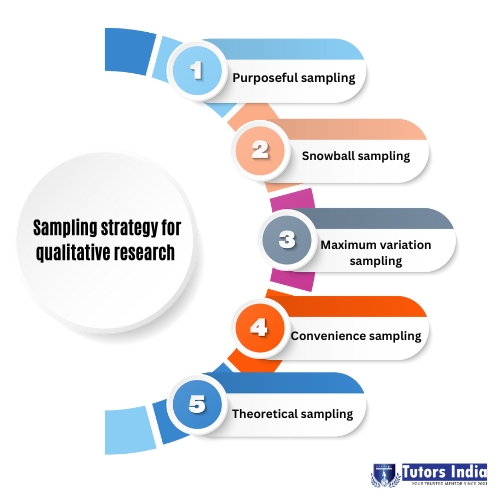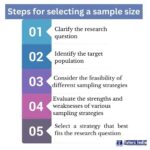What is an adequate sample size for qualitative research?
Research involving participants involves a sample. The sample size is the number of individuals included in a particular study. Determining the right sample size is crucial in the Research methodology chapter which in turn affects the results of the research. However, there are some differences between qualitative and quantitative research regarding sample size estimation, placing an emphasis on qualitative research.
There is no fixed sample size for qualitative research as the sample size in qualitative research is often determined by data saturation. Data saturation occurs when new data no longer reveal new information or themes related to the research question. Therefore, the research question‘s complexity, the sample diversity and the analytical approach determine the sample size for qualitative research. For example, researchers may need to collect data from as few as 10 participants to as many as several hundred participants to achieve data saturation, depending on the research question and other factors. Therefore, it is essential to note that sample size in qualitative research is not determined by statistical power or representativeness but rather by the quality and depth of the data collected.
Is there a sample size calculator for sample size calculation for qualitative research?
There is no standard sample size calculator for qualitative research because the sample size in qualitative research is not determined by statistical power or representativeness but by the principle of data saturation. However, some tools and resources can help researchers estimate an appropriate sample size for their qualitative research study.
One such resource is the “Sample Size for Qualitative Studies Calculator”, developed by the University of Colorado in Denver. This tool asks users to input information such as their research question, data collection method, expected data complexity, and desired level of confidence in their findings. Based on these inputs, the calculator provides a suggested sample size range for the study.
While such tools can help estimate sample size in qualitative research, it is essential to remember that the final sample size should be determined iteratively, based on the quality and depth of the data collected, until data saturation is achieved. Therefore, researchers should use these tools as a starting point but remain flexible and adjust their sample size as needed during data collection and data analysis.
What is a sampling strategy that I should focus on for qualitative research?
The sampling strategy for qualitative research depends on the research question, the purpose of the study, and the type of data the researcher wants to collect. Some common sampling strategies for qualitative research include:

- Purposeful sampling: This strategy involves selecting participants based on their relevance to the research question and ability to provide rich and informative data. Purposeful sampling can include selecting participants with a particular characteristic, experience, or perspective relevant to the study.
- Snowball sampling: This strategy involves identifying initial participants and then asking them to refer others who may be relevant to the study. Snowball sampling is often used when the target population is difficult to access, such as in studies of marginalized or stigmatized groups.
- Maximum variation sampling: This strategy involves selecting participants who represent a wide range of variations on relevant characteristics, such as age, gender, socioeconomic status, or geographic location. Maximum variation sampling is often used to increase the diversity and richness of the data.
- Convenience sampling: This strategy involves selecting participants who are easily accessible to the researcher, such as those who are readily available or who respond to recruitment efforts. Convenience sampling is often used when time or resources are limited.
- Theoretical sampling: This strategy is often used in grounded theory research, which involves developing theories based on participant data. Theoretical sampling involves selecting participants based on emerging theories or hypotheses and collecting data to test and refine these theories.
It is important to note that the sampling strategy should be selected based on the research question and the type of data that the researcher wants to collect. Qualitative research aims not to achieve statistical representativeness but to collect rich and informative data that can answer the research question. Therefore, the sampling strategy should be selected to maximize the quality and depth of the data collected so that it will be effective to carry out the Qualitative statistical analysis in research.
Conclusion
The sample size in qualitative research is determined by data saturation, not representativeness. Selecting a sampling strategy for qualitative research should be a deliberate and thoughtful process informed by the research question, the target population, and available resources.
Tutors India has an expert-backed team that assists students of various disciplines in writing their Dissertation at a reasonable cost. It helps students select the right topic, choose the type of research they want to do, determine the right methodology, samples to complete the dissertation on time.

 Previous Post
Previous Post Next Post
Next Post